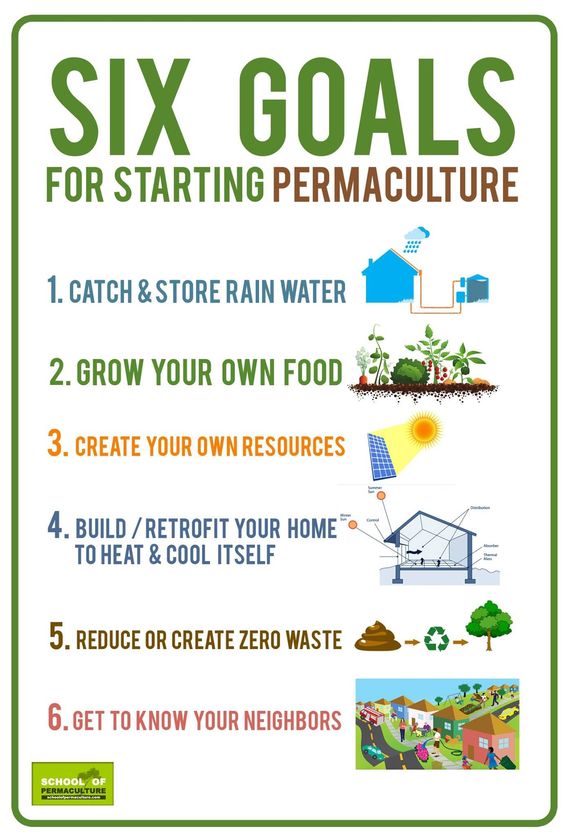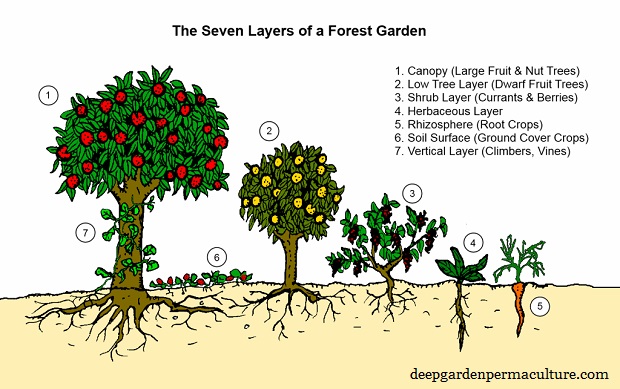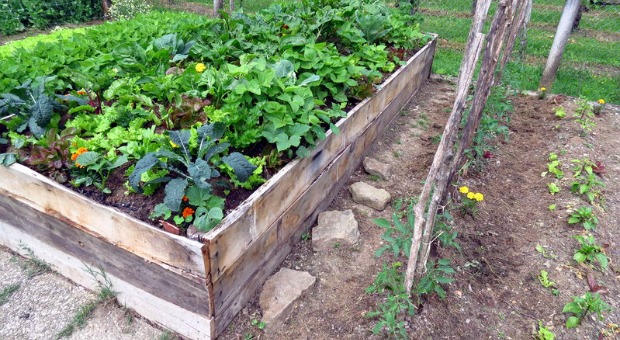If your goal is food independence, then you need to learn about permaculture.
But before we talk about why you should incorporate it into your plans, let’s talk about what it actually is. In a nutshell, permaculture is an ecosystem that is completely sustainable. It doesn’t require anything external to maintain its growth cycle or to survive.
Sounds good, right? Of course it does, and it’s not that complicated to start. Of course, you CAN get fancy and invest a lot of money into it, but you really don’t need to. The idea is to create an environment in which you’re working with nature instead of against it. In other words, don’t look at each part of your system individually; look at how they work in relation to one another.
Permacultures create their own energy and dispose of their own wastes. They’re balanced and sustainable, and you may even be using at least a partial permaculture now. Though it’s most often associated with food, the philosophy will work in every aspect of your life.
And if your goal is total independence and sustainability, then that’s what you want to do.
Difference Between Organic Gardens and Permaculture
Organic gardens are simply that – gardens. They aren’t sustainable and they don’t look beyond the growth of plants in the present. Permaculture is the creation of an actual environment. Your main focus is to create an environment where the water and nutrient loop is closed by using all forms of waste, and reducing or eliminating dependence on outside sources.
Organic gardens, strictly speaking, are traditional gardens that use chemical-free soils and seeds. They don’t work to improve the soil or build a cooperative ecosystem where everything works well together. Organic gardens have a completely different focus than permaculture.
So, organic gardens have higher yields but less variety, the products ripen all at once and it’s mostly up to you to control pests and do the rest of the work.
In a permaculture environment (which may not necessarily meet the requirements to be organic based on using local sources), you have a wider range of plants and products that provide food, fuel, recreation, and habitat. It nurtures your home by deflecting wind, providing shade, and filtering air.
Everything is created by working with nature, so the shape of your garden is determined by water catchment. All sources are local and reusable and you’re sharing the workload and pest control with insects and local animals.
What is the Purpose of Permaculture?
In a nutshell, the purpose of permaculture is to create a sustainable, self-sufficient, cooperative environment.
There are several different points that are critical to permaculture. First, preservation of the soil is paramount. You preserve it by keeping it covered so that the rain doesn’t wash away the nutrients and to keep harmful UV rays from destroying the natural living things in the soil.
Next, everything works hand-in-hand to form a natural habitat. It utilizes local plants or ones that are well-suited to your geography.
Also, the ultimate goal isn’t to create a food source; the goal is to provide a sustainable environment that meets more than just that one need. You plant hardy plants that aren’t fragile, needy, or prone to disease. Nothing but the tough cookies that can cut it in nature! Of course, the disease resistance is the most important part there.

Permaculture in Practice
A common technique with permaculture is plant stacking. That means that you plan your spaces so that you’re growing plants that play well together in a stacked, even vertical, manner.
You may consider growing squash together with okra and lettuce. First, you’d plant the okra, which grows up and has few lower leaves. Then you’d plant the squash so that it has the ground space to sprawl. Then you may want to sprinkle lettuce seeds in amongst them, because lettuce loves the shade. You’re growing three compatible plants in the same space that you would typically grow one.
You may have heard of another combination, if you’re a long-time gardener: the three sisters method that the Native Americans supposedly taught to the English. You grow corn, squash, and pole beans together. This combination really is successful, if you have enough space to grow corn. Either way, you get the idea.
Function is always a top priority. Instead of growing a floral hedge, a permaculture choice would be to grow blackberry or raspberry bushes. Nobody wants to walk through those, though people will most certainly steal them. Still, it’s a point.
Terracing, or making steps, is another method that you may use in your permaculture system to help maintain and build the soil and hold water.
You may even take it a step further and factor in trees in your environment as well as shrubs and grasses because all of those work to protect the soil.
Still, this is just another step in the right direction. The next step, once you have the soil protected and grasses and plants growing, would be to add a source of fertilization. Animals or fish eat the vegetation and recycle it into fertilizer.
Next, to take it a step further, you add a sustainable source of water by building catch basins, micro dams, and other methods of catching and storing water. Now look what you have – a sustainable environment.
If you follow permaculture in its purest form, you won’t be planting; instead, your natural plants will be allowed to go to seed and regrow just as it would in nature. Of course, you may not opt to do that, especially considering you need an organized source of food to live.

What if You Don’t Have Space?
Of course, we’re not all so lucky as to have a space big enough to make his happen, and full-scale permaculture does require space. It was actually originally intended as a form or terraforming to create an environment that would sustainably feed the inhabitants who were malnourished, and it was a raging success.
That’s not to say that you can run a modified version of permaculture. For instance, even if you only have a tiny backyard, you can still do a mini-plan. Use the dark and light areas, as well as the wet and dry ones if those exist. Plant plants that prefer each of those environments.
You can also use the stacked gardening techniques, and build micro dams or natural irrigation systems to catch water. You can mulch and focus on building your soil instead of just throwing fertilizer on it year after year. Just as with gardening, it doesn’t really matter how much space you have; you can utilize permaculture to at least a small degree.
And I’d say that a small amount of independence is better than none, right?
Click the banner below for more!
This article has been written by Theresa Crouse for Survivopedia.






















































































Permaculture- Best idea -added with a defensive plan against the government elite and sheepeople who love freebies handouts and really aren’t aware how close to disaster we all are and simply add to the problem world wide. I suggest write more about this topic and how to build a defend-able Permaculture community and lifestyle when the SHTF keep up the good work.